Vue lecture
U.S. Imports Slid in June on Higher Tariffs

«Un pour un»: l’accord franco-britannique sur les migrants entre en vigueur
Sweden, Norway and Denmark to buy $500 million of US arms for Ukraine war under new Nato scheme
The Netherlands was the first country to contribute to the Nato Prioritised Ukraine Requirements List (PURL) initiative

© via REUTERS
Arms race fears as Putin says Russia is no longer bound by missile treaty
Russia's move follows Trump's nuclear messaging

© Sputnik
On Gaza, Germany’s Government Faces Pressure From All Sides

© Lisi Niesner/Reuters
New Russian 9M729 missile threat just brought world back to Cold War era
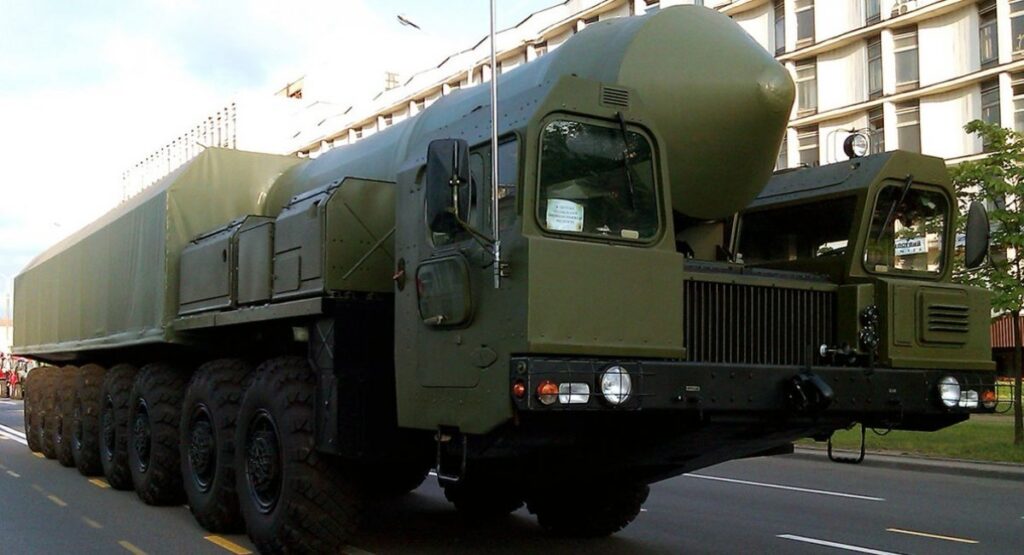
The Kremlin again threatens Europe with missiles. The Russian Foreign Ministry has announced that the country is lifting its self-imposed restriction on the deployment of land-based ballistic and cruise missiles with a range between 500 and 5,500 km, according to Radio Free Europe/Radio Liberty.
Once-banned missiles are back on the table. In 1987, the US and USSR agreed to eliminate all missiles of this class, but in 2019, the treaty formally expired. After that, Russian President Vladimir Putin claimed Russia would not be the first to deploy such missiles unless the US did so first.
Now, Moscow reverses course: it has lifted the restriction, blames the West, and claims a threat from American missiles in Europe and the Asia-Pacific region. The official reason: “steps by the collective West” that, according to the Kremlin, “destabilize the situation in border regions.”
“The Russian Foreign Ministry acknowledges the disappearance of conditions for maintaining the unilateral moratorium on the deployment of such weapons,” the statement says.
The US and NATO: Russia lied and violated the moratorium
Western states already claimed in 2019 that Russia had de facto violated the agreement — the main evidence being the 9M729 missile system, which, according to the US and NATO, has a range exceeding 500 km.
Moscow denies it, but reality suggests otherwise: the missiles exist, and now the Kremlin officially admits it is ready to deploy them. This move threatens to spark a new arms race and escalate security risks not only for Ukraine but for all of Europe.
Russia unleashes 9M729 “Oreshnik” missile on Dnipro in 2024
In November 2024, Russia launched a 9M729 missile at the city of Dnipro, marking the first confirmed combat use of the controversial system, also known by the codename “Oreshnik”. The missile was equipped with six warheads, each capable of independent targeting. The extent of damage remains undisclosed.
Read also
-
HUR: Explosion plunges Russian military repair base in Berdiansk into darkness
-
Zelenskyy: Sanction loopholes allow Russia to continue producing its “Oreshnik” intercontinental ballistic missiles with Western tech
-
New Russian 9M729 missile threat just brought world back to Cold War era
-
Defense Intelligence of Ukraine reveals details of ballistic missile used by Russia on Dnipro
Dans le cœur historique d’Athènes, les habitants se mobilisent face au surtourisme
Dans le nord de l’Europe, les vacances au frais prennent un coup de chaleur
Frontline report: Poland’s fighter jets now scramble nightly while Russian drones test NATO’s eastern border
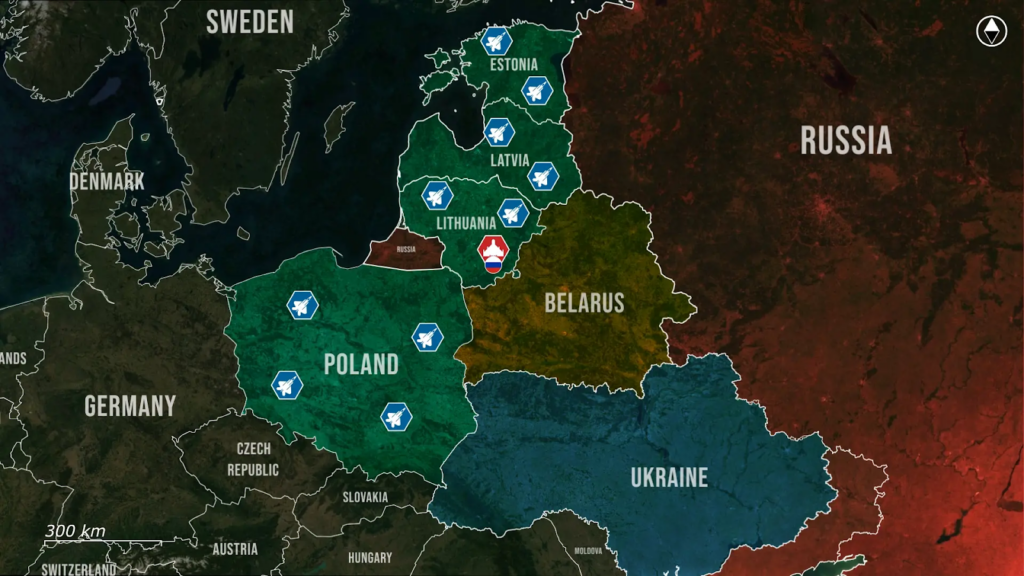
Day 1257
On 3 August, the biggest news comes from Eastern Europe.
Here, a Shahed-type drone flew directly into Lithuanian airspace and passed over the capital, marking a serious escalation in Russia’s aerial provocations against Nato’s eastern flank. Poland’s air force is already on a nightly high alert, and now the rest of the Baltics are joining in, raising what increasingly resembles an iron Curtain in the air.
Recently, a Russian Shahed-like drone crossed into Lithuanian airspace from Belarus and flew over the outskirts of Vilnius, the capital of Lithuania, close enough for civilians to see and film the device in flight. Initial fears suggested a live munition had entered Nato airspace, as Shaheds are often fitted with fragmentation, thermobaric, incendiary, or delayed-fuse warheads to cause maximum casualties and damage to civilian property.
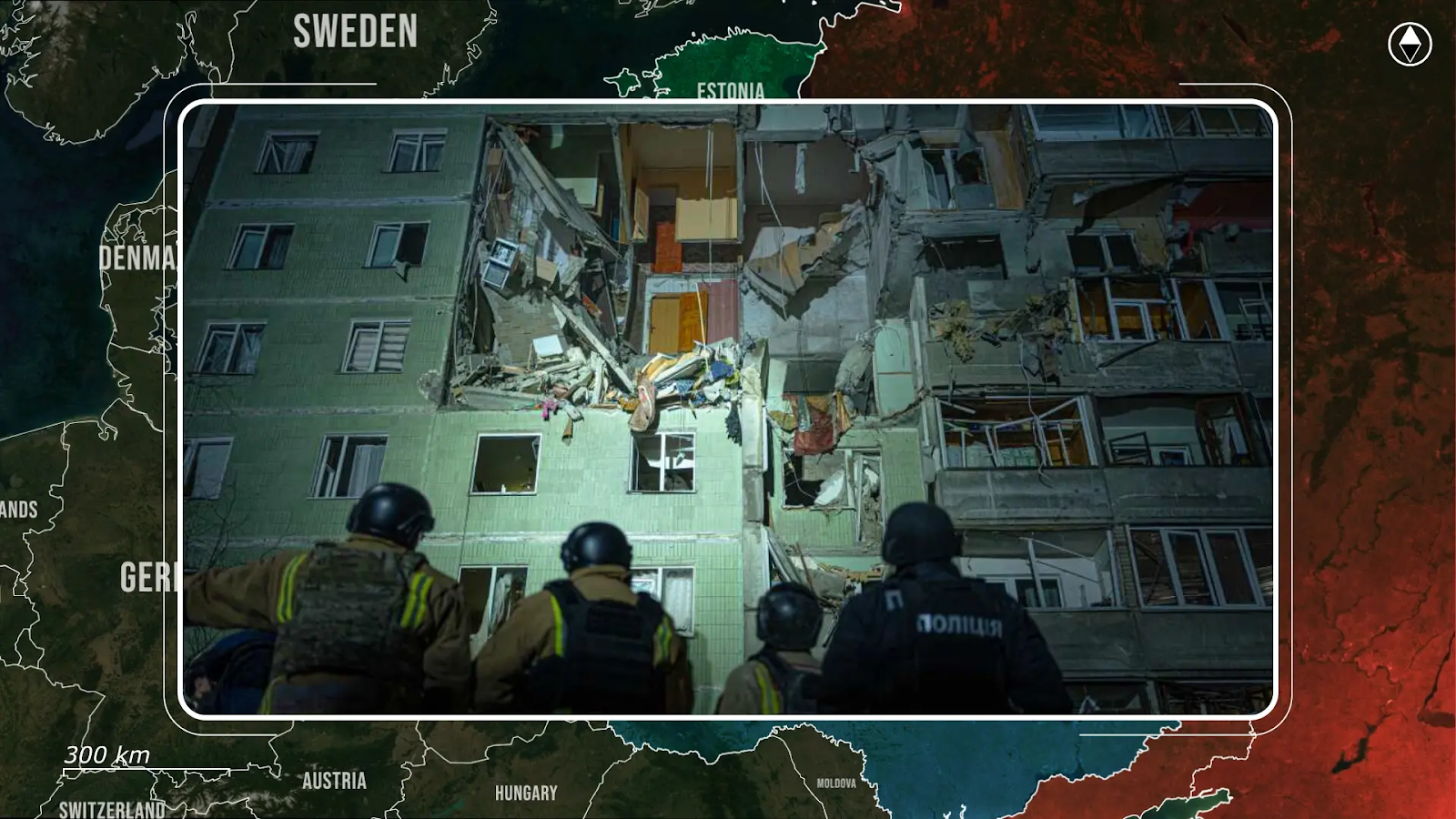
Fortunately, upon further inspection of the video footage, the object was identified as a Gerbera decoy drone, a visually similar platform Russia uses for both reconnaissance and saturation purposes during their daily strikes on Ukrainian cities.
While unarmed, the drone crossed directly over a Nato capital, far from any logical flight path to Ukraine, making it clear that this was no accident.
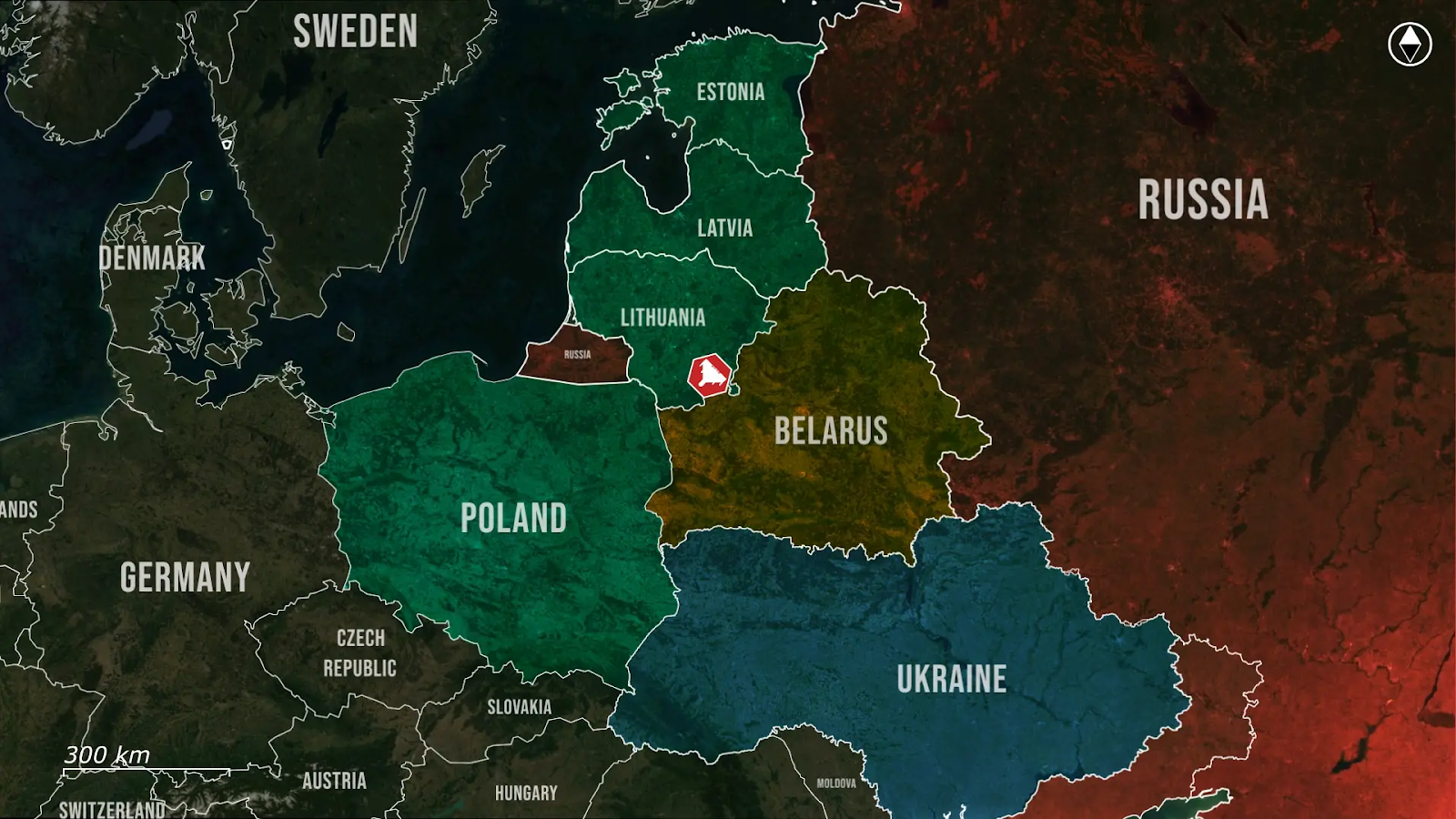
Instead, it was a calculated decision to test Nato’s reaction time, radar coverage, and political tolerance for such direct aerial threats and provocations, and critically, Lithuanian forces did not intercept.
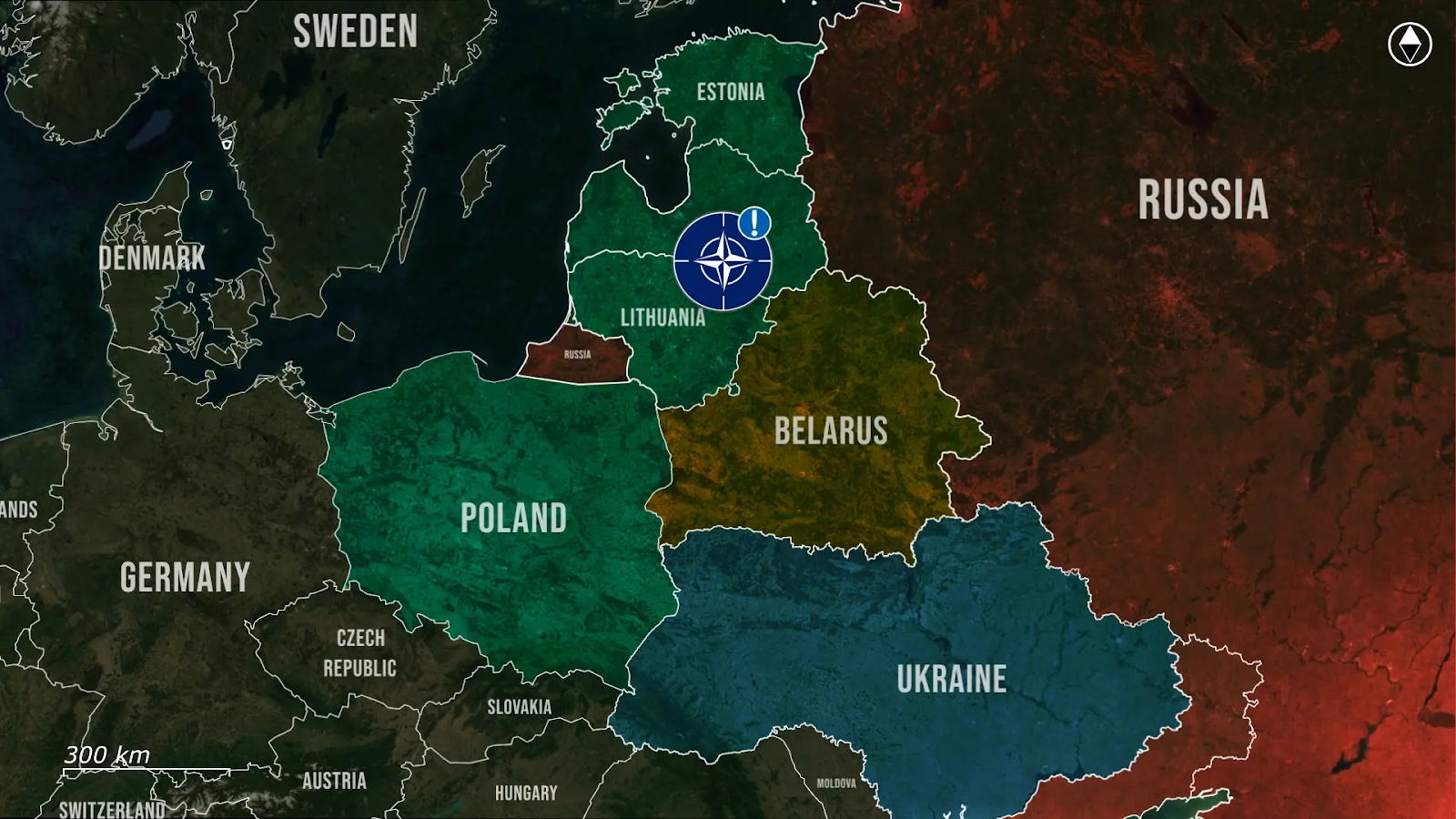
Poland, meanwhile, has entered a state of routine high alert, with Polish and Nato forces scrambling jets and raising radar systems every time Russia launches a large-scale assault on Ukraine, which happens every night and now often even during the day as well. Nato partners, including Swedish Gripens, are now joining Poland in maintaining a high alert status during Russia’s large-scale drone and missile attacks on Ukraine, reinforcing joint readiness across the eastern flank. While these alerts are precautionary, they have become the new norm, as the Polish border lies directly behind the approach paths of Russian missiles and drones targeting western Ukrainian cities. This proximity means any technical malfunction or mid-course deviation could result in a direct violation of Polish airspace, as seen in previous incidents, including when debris from Russian missiles entered Polish territory in 2022, or when a Ukrainian air defense missile landed on a Polish field, killing two farmers.
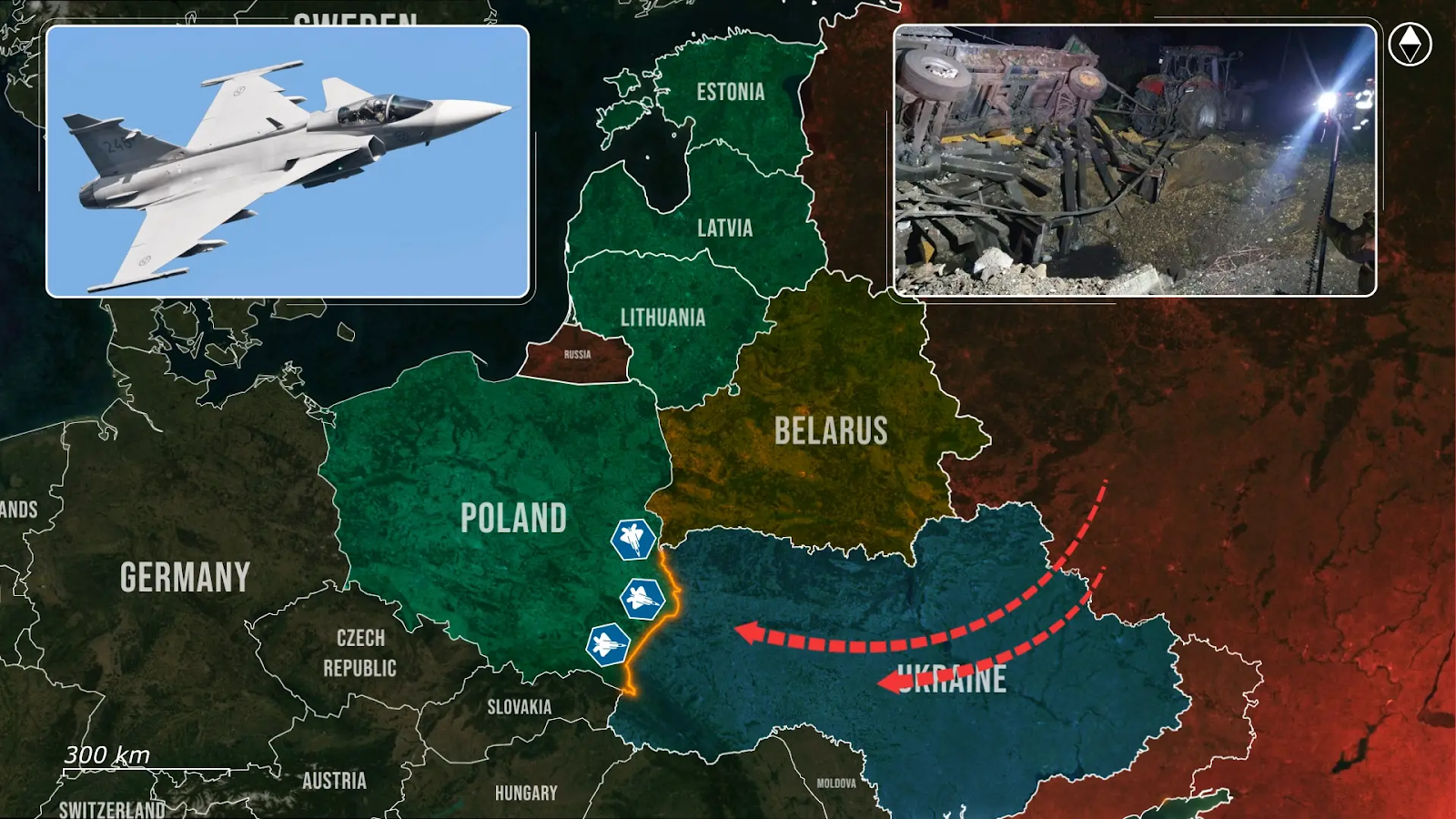
Unlike the calculated provocation over Vilnius, Poland faces a more constant strain of nightly threats, scrambling fighters, activating radar grids, and maintaining alert in civilian areas without knowing whether each launch might cause military objects to cross into its airspace. Across the Baltics, Lithuania, Latvia, and Estonia have long depended on Nato’s Baltic Air Policing mission, with Hungary, Italy, and Spain being part of the current rotation, maintaining quick-reaction alert status and integrated into Nato’s broader air defense system.
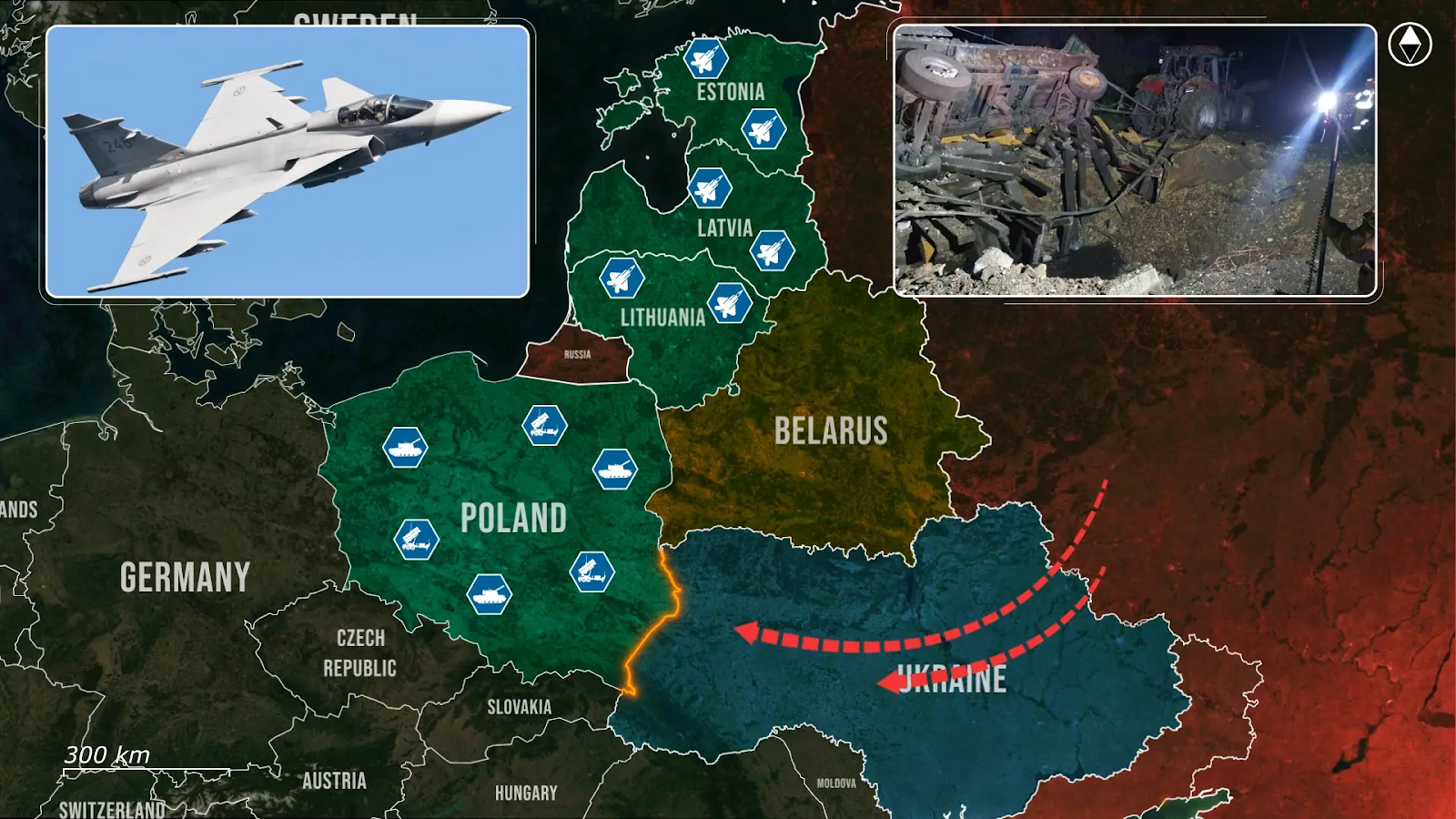
However, the unchallenged drone over Vilnius shows the limits of deterrence alone, and Lithuania is now accelerating the deployments of Ukrainian-developed acoustic drone detection systems, seeking to fill gaps in its early warning networks exposed by the most recent airspace violation.
At the same time, the Baltic states are reinforcing their readiness for both air-to-air and ground-to-air engagements by expanding joint training protocols, adapting quick-reaction procedures, and integrating new detection systems designed to counter the threat of low-flying unmanned platforms.
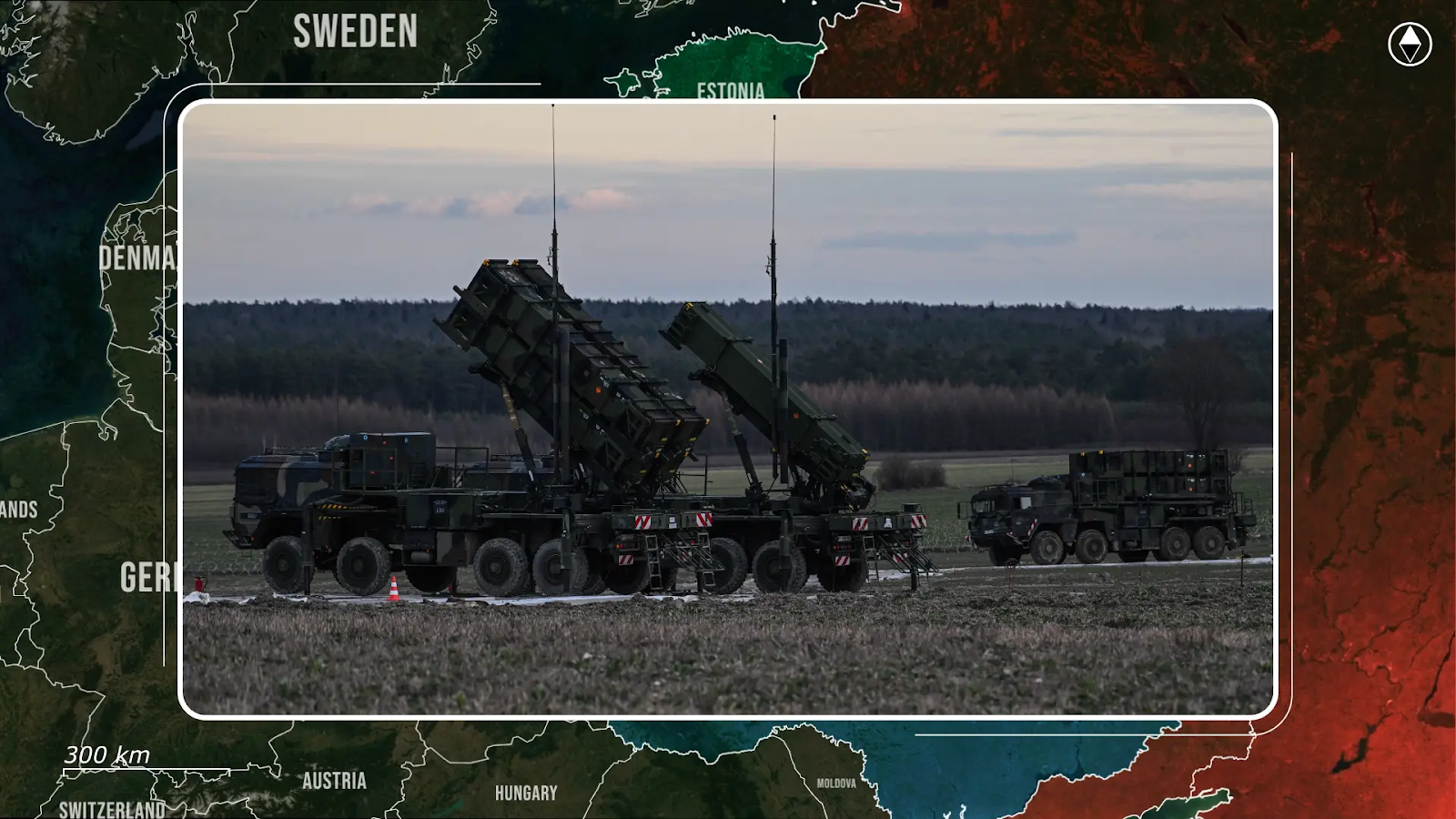
And across all three states, radar tracking, jamming incidents logs, and drone incursions are now analyzed with a single assumption: that any aerial anomaly could be the opening in a broader conflict. The emerging posture is no longer passive monitoring; with new drone detection systems, joint alert protocols, and revised civilian flight corridors, it is becoming forward-leaning, reinforced, and increasingly closed, an Iron Curtain in the air.

Overall, Russia’s latest airspace violations are increasingly escalating and reshaping Nato’s eastern defenses through repeated, calculated provocations that expose gaps, test thresholds, and force reaction. The incursion over Vilnius is a template for how Moscow may continue to pressure Nato’s eastern flank, trying to provoke member states into triggering an open conflict. As Poland’s nightly alerts become routine and Baltic air defenses are forced to harden, the question is no longer whether Nato will respond, but how far that response will go, and as this pattern deepens, the skies over Eastern Europe are no longer a buffer, they are becoming the front line.
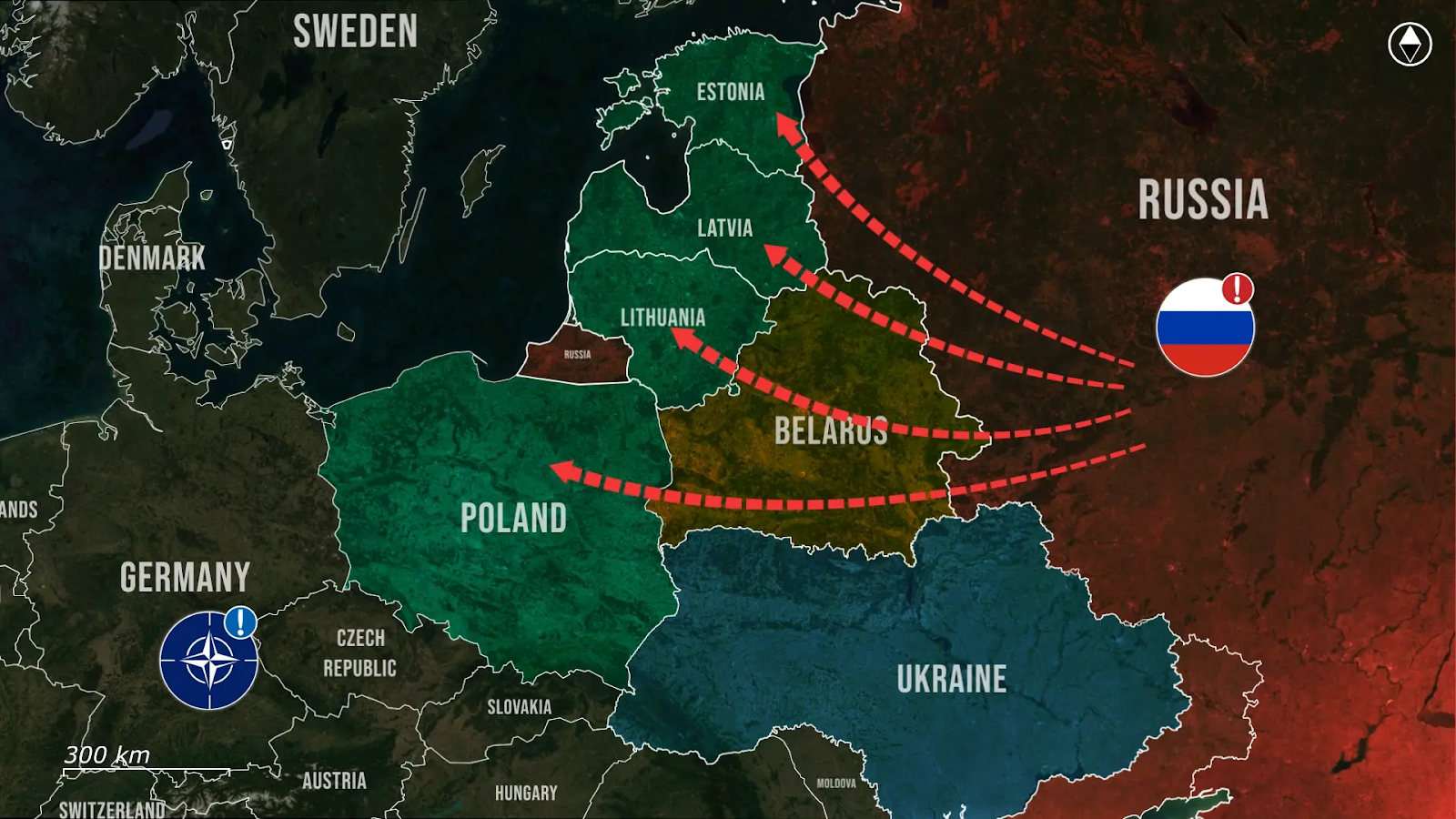
In our regular frontline report, we pair up with the military blogger Reporting from Ukraine to keep you informed about what is happening on the battlefield in the Russo-Ukrainian war
You could close this page. Or you could join our community and help us produce more materials like this.
We keep our reporting open and accessible to everyone because we believe in the power of free information. This is why our small, cost-effective team depends on the support of readers like you to bring deliver timely news, quality analysis, and on-the-ground reports about Russia's war against Ukraine and Ukraine's struggle to build a democratic society.
Become a patron or see other ways to support.
Ukraine Announces Arrests Targeting Corruption in Military Procurement

© Tetiana Dzhafarova/Agence France-Presse — Getty Images
Inside Ukraine’s effort to produce more of its own weapons to fight Putin as Trump’s support flip-flops
Askold Krushelnycky examines how Donald Trump’s fluctuating position on the Ukraine war has encouraged Kyiv to look closer to home to produce the weapons it needs to fight Russia

© Ukrainian Armed Forces
Sykes-Picot, the 109-Year-Old Pact That Looms Over French and British Moves to Recognize a Palestinian State

© Eduardo Munoz/Reuters
La Russie aurait lancé un nombre record de drones sur l’Ukraine en juillet
A French Beach Town’s Plea to Tourists: Keep Your Clothes On

© Shutterstock
Zelensky appelle à «changer de régime» en Russie après des bombardements sur Kiev
Reuters: Ukraine’s financing gap could widen due to delayed reforms
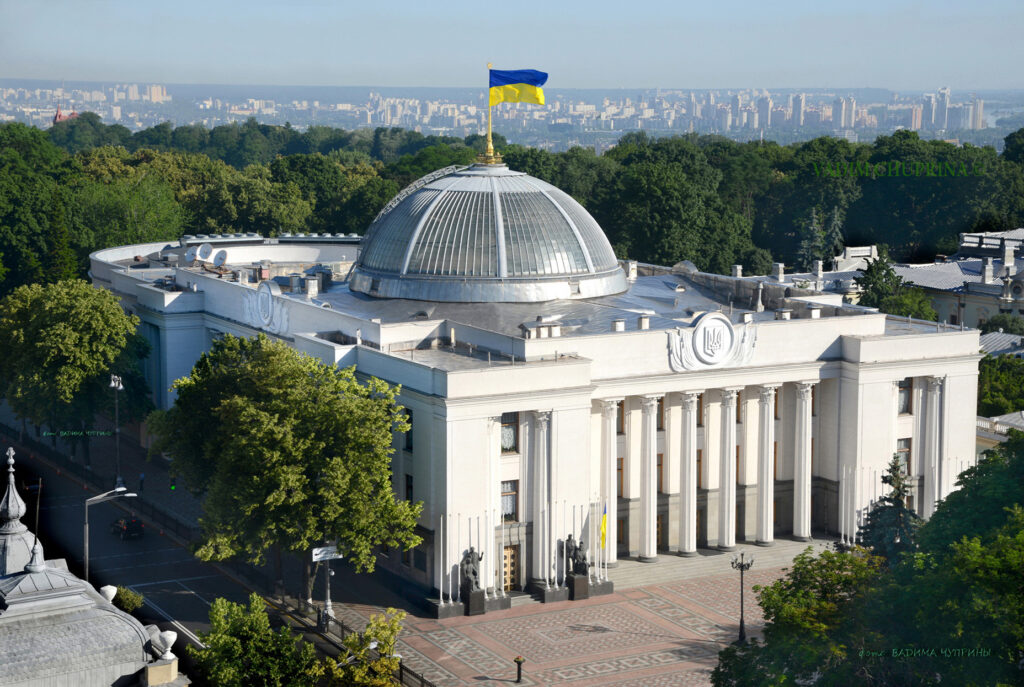
Ukraine faces a potential funding shortfall of $10-15 billion next year as the country struggles to meet reform commitments demanded by international lenders while maintaining intensive defense spending, according to a Reuters analysis.
The government currently directs most state revenues toward military operations, relying on foreign aid totaling $139 billion since Russia’s February 2022 invasion to cover social and humanitarian expenses, state data shows.
Central Bank Governor Andriy Pyshnyi revealed that only one-third of the $65 billion required for 2026-2027 has been secured, with negotiations continuing for the remainder. A survey of eight economists by the Centre for Economic Studies in Kyiv indicates Ukraine will need between $39 billion and $58 billion in external financing for 2025 alone.
“A key challenge for the government now is to look for $10-15 billion in addition to that volume of aid which partners have already pledged for 2026,” ICU investment house stated in a research note, according to Reuters.
The funding gap has widened after Ukraine missed several reform targets agreed with lenders, including judicial appointments and anti-corruption leadership positions. President Volodymyr Zelenskyy’s decision to tighten control over the National Anti-Corruption Bureau (NABU) and Specialized Anti-Corruption Prosecutor’s Office sparked the largest wartime street protests and drew sharp criticism from European allies.
Zelenskyy subsequently reversed course, submitting new legislation to parliament to restore institutional independence. The draft bill was scheduled for a vote on 31 July.
Lithuania Prime Minister Gintautas Paluckas steps down after investigations and protests
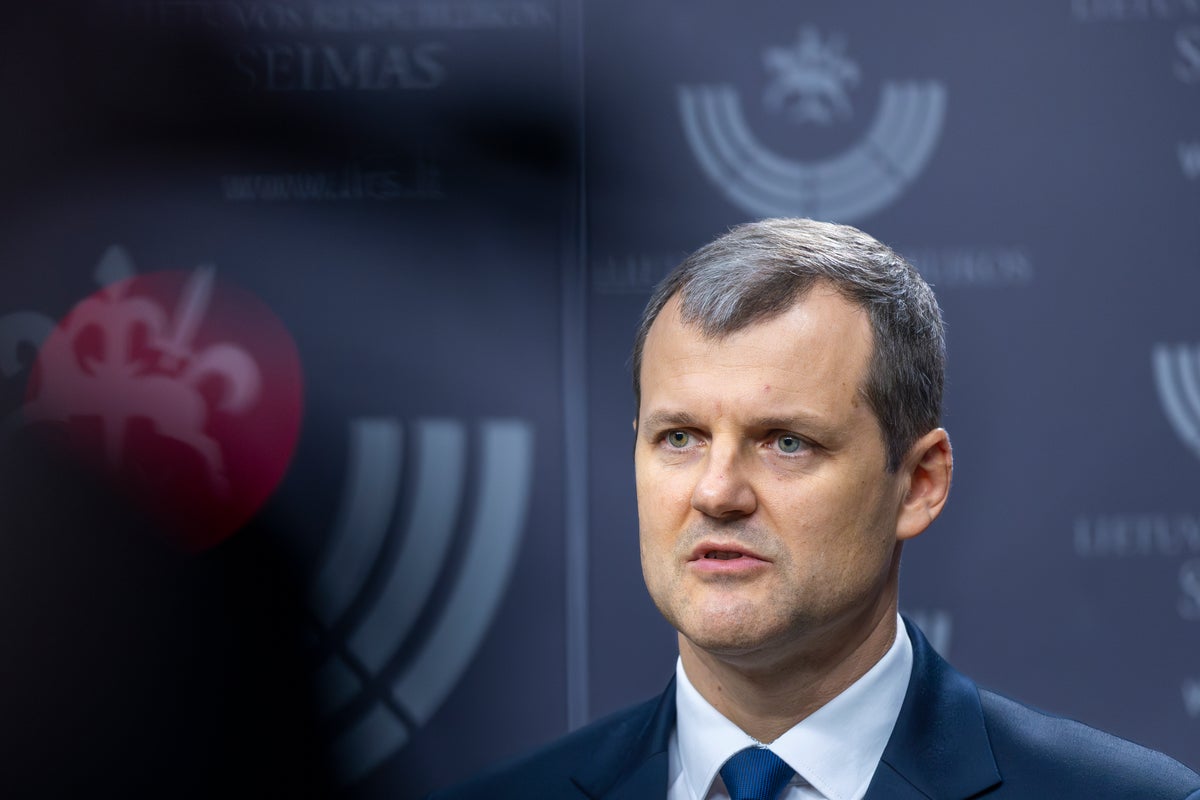
© Copyright 2024 The Associated Press. All rights reserved
What Countries Recognize a Palestinian State: A Map

En Ukraine, le Parlement va "corriger" la loi anticorruption vivement contestée

WSJ: Republicans develop plan to allow Europeans to buy weapons for Ukraine
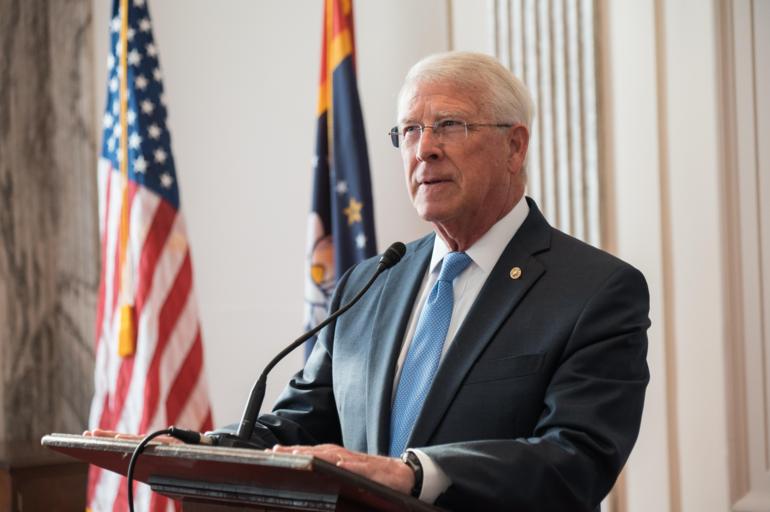
Two senior Senate Republicans have unveiled legislation that would enable European allies to finance US weapons donations to Ukraine, providing the most detailed framework yet for President Trump’s proposal to shift war funding to Europe, The Wall Street Journal reported on 30 July.
The Peace Act, proposed by Sens. Roger Wicker (R-Miss.) and Jim Risch (R-Idaho), would establish a Treasury fund to accept money from allies, allowing the Defense Secretary to pay contractors to replenish US stockpiles while continuing weapons shipments to Ukraine without compromising American military readiness, according to GOP aides familiar with the proposal.
The legislation aims to generate $5 billion to $8 billion annually, with Germany and the United Kingdom identified as likely contributors, the aides said.
“This is the fastest way to arm Ukraine as well as to minimize the strategic and military threat posed by Russia to the US and NATO,” Wicker said, according to the WSJ.
The proposal comes as Trump has grown increasingly frustrated with Russian President Vladimir Putin’s rejection of US-led cease-fire efforts. After initially giving Putin a 50-day deadline for a cease-fire, Trump moved that deadline up to 10 days on 28 July, threatening Russia and its trading partners with new tariffs and secondary sanctions if Moscow refuses to negotiate.
Wicker, who chairs the Senate Armed Services Committee, and Risch, who leads the Senate Foreign Relations Committee, have discussed the legislation with the White House, which has been “largely receptive to the idea,” aides said. The plan involves passing the measure later this year as part of the annual defense policy bill.
The mechanism would complement existing European payments to US contractors for new weapon production, which can take years to complete. The Peace Act would accelerate delivery by tapping existing US inventories, according to the WSJ report.
The US has provided nearly $66 billion in security assistance to Ukraine since Russia’s 2022 invasion, but the Republican-led Congress shows little appetite for authorizing additional foreign aid packages.
Trump has approximately $3.85 billion in previously authorized drawdown authority remaining, though he has not yet used this tool to send new arms packages to Ukraine. His administration continues delivering previously approved weapons packages from the Biden era, following a brief Pentagon pause in certain munitions earlier this month.
How the E.U. Wooed Trump With Flashy but Flimsy Numbers

© Tierney L. Cross/The New York Times
UK Will Recognize Palestinian Statehood In September, Unless Israel-Hamas Cease-Fire is Reached

© Pool photo by Jordan Pettitt
UK Will Recognize Palestinian Statehood In September, Unless Israel-Hamas Cease-Fire is Reached

© Pool photo by Jordan Pettitt
En Ukraine, des soldats épuisés et sous-équipés face au déluge de drones russes
Higher US tariffs part of the price Europe was willing to pay for its security and arms for Ukraine
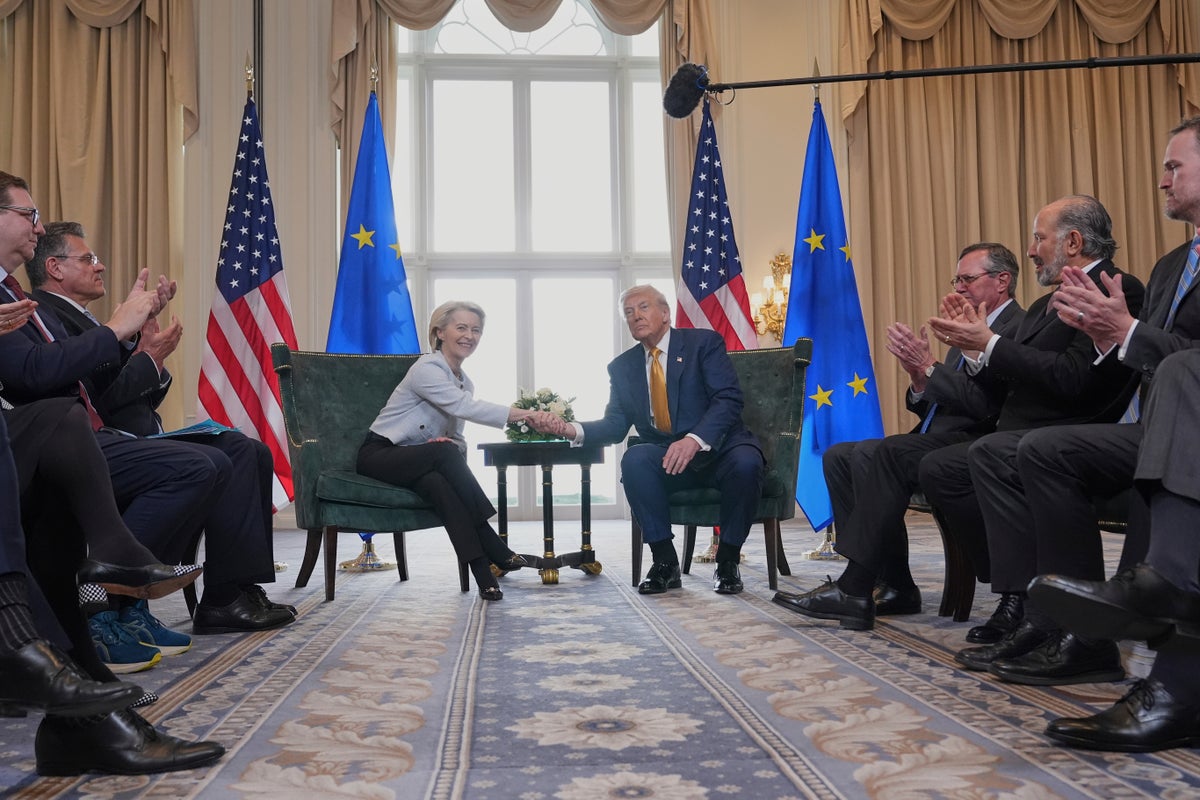
© Copyright 2025 The Associated Press. All rights reserved
Au moins 25 morts dans des frappes russes au lendemain de l’ultimatum de Trump
NATO tanks would get “stuck in tunnels” if Russia invaded EU, European commissioner warns
![]()
European Commissioner for Transport and Tourism Apostolos Tzitzikostas has warned that Europe’s roads, bridges and railways cannot support rapid movement of tanks, troops and military supplies in case of war with Russia, Financial Times reported on 29 July.
“If Nato’s tanks were called to respond to an invasion by Moscow’s forces across the EU’s eastern border, they would get stuck in tunnels, cause bridges to collapse and get snarled up in border protocols,” Tzitzikostas told the publication.
The Greek commissioner outlined plans to spend €17 billion ($20 bn) on overhauling continental infrastructure to boost military mobility.
“We have old bridges that need to be upgraded. We have narrow bridges that need to be widened. And we have nonexistent bridges to be built,” he said.
Current infrastructure poses significant obstacles for military operations. European trucks typically weigh up to 40 tonnes, while tanks reach 70 tonnes. “The reality today is that if we want to move military equipment and troops from the western side of Europe to the eastern side, it takes weeks and in some cases months,” Tzitzikostas added.
The European Union is developing a strategy to ensure troops can move “in a matter of hours, maximum a matter of days” in response to an attack. The plan involves upgrading 500 infrastructure projects along four military corridors across the continent.
These projects, identified in conjunction with NATO and the alliance’s military commanders, remain confidential for security reasons. Brussels also plans to reduce bureaucracy to prevent “tanks being stuck in paperwork” when crossing borders, according to Tzitzikostas.
The strategy, set to be presented later this year, forms part of broader war preparations amid warnings of possible confrontation with Moscow and expected reduction in US military presence in Europe.
NATO Secretary-General Mark Rutte warned in June that Russia could attack alliance members by 2030. German Federal Intelligence Service assessments indicate Russia views itself in systemic conflict with the West and is preparing for major war with NATO.
EU Defense Commissioner Andrius Kubilius shared Western intelligence assessments that Russian attack on EU states could occur within the next few years.
Europe Made Major Trade Concessions to Trump. How Did That Happen?

© Tierney L. Cross/The New York Times
En Écosse, un Trump décomplexé impose sa «diplomatie du golf»
While Russia kills 232 Ukrainian civilians in one month, its citizens sip wine on French Riviera—with EU visas in hand
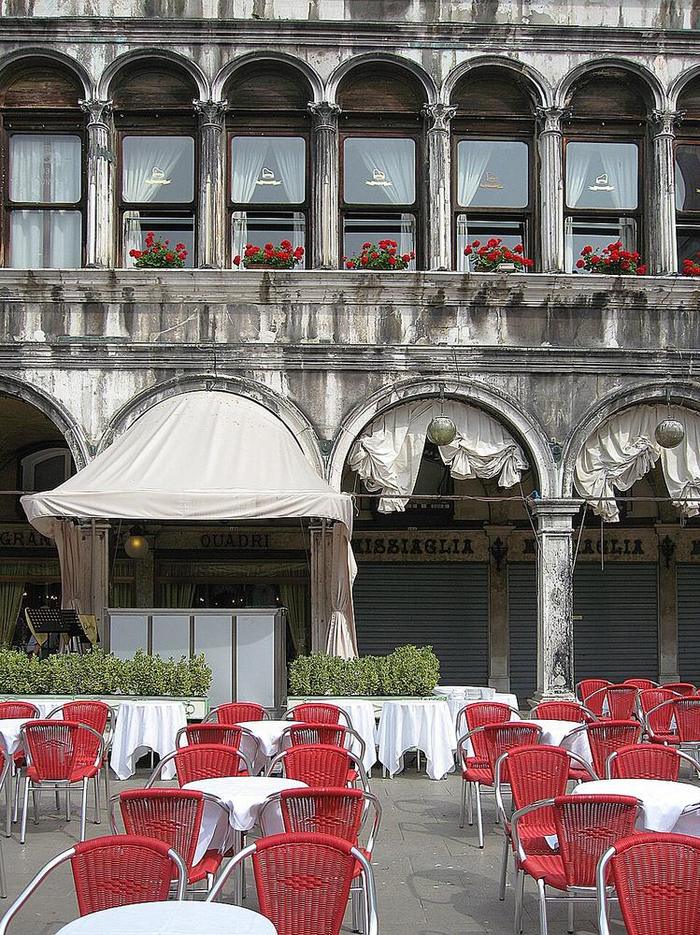
The Russians are continuing to vacation while war rages on. As Russian missiles rain down on Ukrainian cities, Russian citizens are sunbathing undisturbed on the beaches of France, Italy, and Spain, The Telegraph reports.
As of late July 2025, approximately 74% of Russian citizens support the war, while 24% say they want to launch a nuclear missile strike on Ukraine.
Visas for Russians despite the war
Despite Russia’s all-out war against Ukraine and ongoing sanctions, Europe continues to welcome Russian tourists. Overnight stays by Russians in French and Italian hotels rose by 19% over the past year.
These countries, both NATO and EU members, are still opening their doors to citizens of the aggressor state.
“In the fourth year of Russia’s war of aggression against Ukraine, it is extremely surprising to see statistics showing an increase in the number of visas issued to Russian citizens,” emphasized Ukraine’s Ambassador to the EU, Vsevolod Chentsov.
France and Italy keep their doors open
France, a member of the “Coalition of the Willing” and an active supporter of Ukraine, is in no hurry to restrict tourist flows from Russia. Along with Italy, it advocates keeping borders open, at least for “wealthy Russians.”
Russia does not intend to end its war against Ukraine. On the contrary, Russian ruler Vladimir Putin has told US President Donald Trump that military actions will escalate during the summer offensive. In the first half of 2025, Russia killed or injured 6,754 civilians in Ukraine, the highest number for a six-month period since 2022, the UN reports. In June 2025 alone, the UN documented 232 civilian deaths and 1,343 injuries, marking the highest monthly casualty toll in three years.
“There are many Russians who support the war, and particularly the Russians who have money. What we absolutely don’t want to do is allow these Russians to enjoy the privileges and resources of Europe, while at the same time they’re supporting Putin’s war efforts,” said financier and anti-Putin activist Bill Browder.
Hybrid warfare and EU security
Experts believe that access for Russians is not only morally questionable but also a security risk. Browder calls for a ban on entry for Russian citizens unless they can prove they oppose Putin’s regime.
He stressed that denying visas can pressure the Putin regime and reduce the security threat posed by Russia’s hybrid war against the West.
Despite a ban on direct flights, dozens of travel routes between Russia and Europe still operate via Türkiye, Georgia, and Serbia. Meanwhile, Ukraine pays in blood for every day of freedom, as Europe hosts those who support the aggressor.
Read also
-
Russia kills Ukrainian baby and seven more people as Trump keeps pushing predictably doomed peace talks
-
UPDATE: Russia claims peace interest while its ballistic missile kills 6-year-old boy near Sumy
-
UN: Kryvyi Rih strike is Russian deadliest attack on Ukrainian children since war began
-
HUR: West still has not sanctioned 70 Russian companies behind production of missiles that struck Kyiv’s largest children’s cancer hospital year ago
La Commission européenne défend son accord commercial conclu avec Trump
France Criticizes E.U.’s Trade Deal With Trump

© Ralf Hirschberger/Agence France-Presse — Getty Images
European Carmakers Welcome, and Worry About, U.S. Tariff Deal

© Ingmar Nolting for The New York Times
L’UE accuse le site de commerce en ligne Temu de violer sa législation numérique
Europe, Worried by Other Global Crises, Agrees to Trump’s Trade Deal

© Robin Van Lonkhuijsen/ANP, via Agence France-Presse — Getty Images
Ukraine-Russia war latest: Putin ‘unlikely to bow’ to Trump’s sanction threat as ceasefire deadline looms
US special envoy Steve Witkoff is visiting Russia this week in a push for peace before Trump’s Friday deadline to Putin

© Ukrainian presidential press/ AFP via Getty
Les États-Unis et l’Union européenne ont conclu une entente commerciale
Cet accord-cadre prévoit des droits de douane de 15% sur la plupart des produits européens importés aux États-Unis.
- Les importations d’aluminium et d’acier demeureront, elles, taxées à 50%.
L’Europe s’engage à:
- investir 600 milliards $US aux États-Unis;
- acheter pour plusieurs centaines de milliards $US en équipements militaires américains.
[L'article Les États-Unis et l’Union européenne ont conclu une entente commerciale a d'abord été publié dans InfoBref.]
England’s Lionesses Take ‘Football Home’ With Gripping Euro Win

© Fabrice Coffrini/Agence France-Presse — Getty Images
Le déraillement d’un train en Allemagne fait plusieurs morts
U.S. Reaches Preliminary Trade Deal With Europe
Les pompiers en Grèce luttent contre des incendies «titanesques» pour le deuxième jour
Dozens of Wildfires Burn in Greece and Turkey as Temperatures Soar

© Stamatina Tamvaki/Reuters
E.U. Cuts Aid to Ukraine Over Corruption Concerns

© Brendan Hoffman for The New York Times
Five dead after Ukraine and Russia trade drone and missile attacks as talks stall
Officials say Russia launched 235 drones and 27 missiles in overnight attack - Zelensky vows Moscow would feel the consequences

© Reuters
Poll reveals 14% of Slovaks want to join Russia
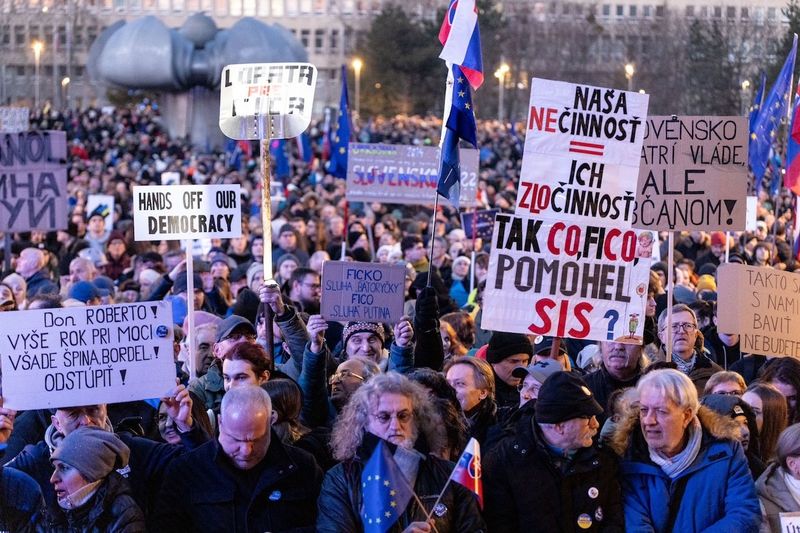
Unexpected results from a social survey have stunned observers. According to research by the SCIO agency in cooperation with the portal Rozhovory so Šimonom, 14% of Slovaks surveyed openly want to join Russia, and another 18% consider this possibility.
Prime Minister Robert Fico states that Slovakia will provide neither financial nor military support to Ukraine in its war with Russia. Additionally, Foreign Minister Juraj Blanár expressed the view that the West should forgive Russia for the killing of more than 13,000 civilians, not including Mariupol, where the number of victims could be as high as 100,000.
The idea is most supported by students and the unemployed, which, according to SCIO analyst Martin Klu, rather reflects economic instability and disappointment with the country’s Western course than genuine loyalty to the Kremlin.
Attitudes toward military neutrality
Respondents were also separately asked about military neutrality. Here, 32.5% opposed neutrality if it led to a decline in living standards. Meanwhile, 15% support neutrality under any circumstances.
Socio-economic distribution of views
The least support for the ideas of “neutrality” and “Russian integration” is observed among people with higher education, urban residents, and citizens with above-average incomes. Analysts believe this is linked to the economic stability and better prospects of these groups.
Read also
-
Slovakia’s Ammunition for Ukraine campaign smashes records, raising over € 5 million despite government’s stance
-
EU will try again to choke off Putin’s war machine with 18th sanction package this week, after Slovakia blew whole plan apart
-
Eight detained in Slovakia over suspected € 7.4 mn military aid fraud to Ukraine
-
Hungary and Slovakia expand Russian fuel use while EU cuts imports
EU lawmakers push gas ban deadline forward as Russia loses energy grip on Europe
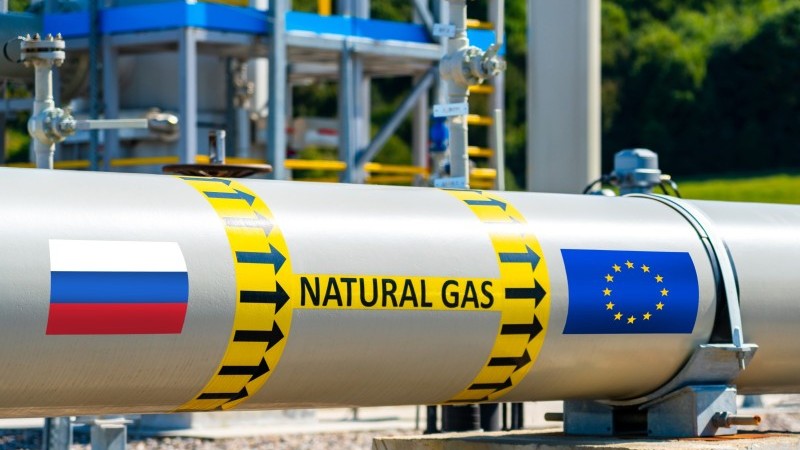
European Parliament lawmakers are pushing to accelerate the EU’s ban on Russian gas imports by one year, moving the deadline from January 2028 to January 2027, Reuters reported on 25 July.
The EU vowed to reduce its dependence on Russian gas following the Russian full-scale invasion of Ukraine. The bloc cut imports by more than half since 2022 through diversification to other suppliers and increased LNG (liquefied natural gas) purchases.
The recent proposal comes from deputies representing the Parliament’s largest political group, the European People’s Party, and the Greens, who favor a tougher stance than the European Commission’s June proposal.
Vaidere has also proposed requiring governments to impose penalties on companies that violate the ban, “potentially including by revoking licences for energy trading,” Reuters reported. Niinisto wants a full ban on Russian oil imports from January 2027, which the European Commission did not propose.
The European Parliament will vote in autumn to confirm its negotiating position with EU countries. The final measures require approval from both Parliament and a qualified majority of EU member states. It means that Hungary and Slovakia cannot block the decision despite their continued imports of Russian pipeline gas and opposition to EU-wide bans.
Under the Commission’s original proposal, the EU would begin phasing out Russian gas imports under new and short-term contracts from January 2026, with complete elimination by January 2028.
Russian gas supplied about 19% of Europe’s needs last year through the TurkStream pipeline and LNG shipments, down from roughly 45% before Moscow’s 2022 invasion of Ukraine. This share is expected to fall to 13% in 2025 as the EU works to end what it calls “decades-old energy relations with Europe’s former top gas supplier.”
Orban: Ukraine EU membership would “drag war into Europe,” proposes buffer state role instead
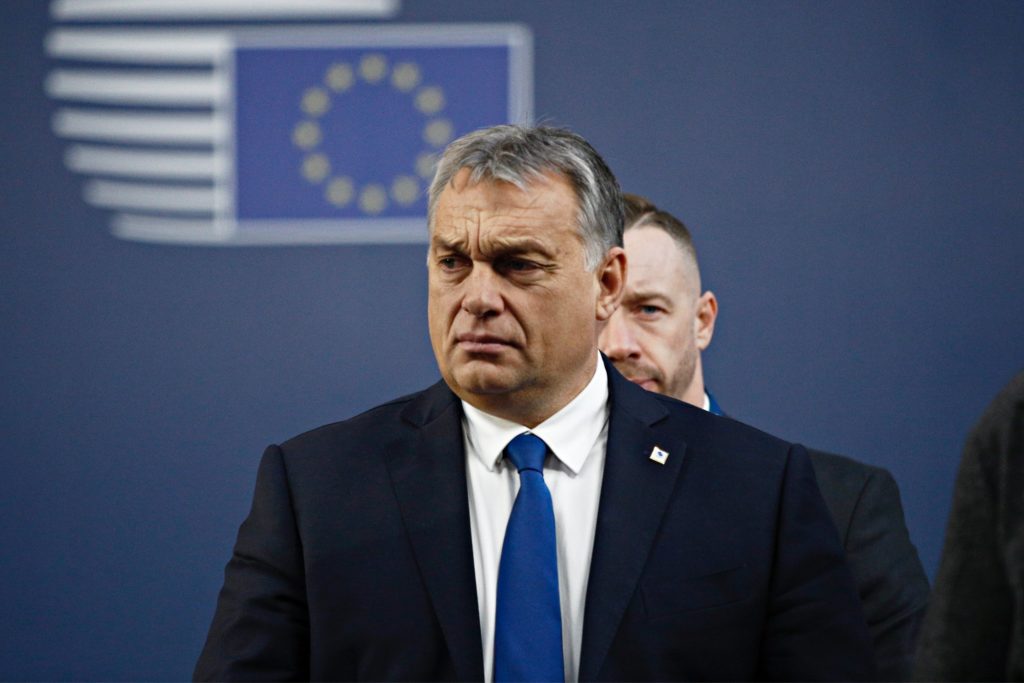
Hungarian Prime Minister Viktor Orban on 25 July proposed “strategic cooperation” with Ukraine instead of full European Union membership, arguing that Kyiv’s EU accession would bring the war with Russia directly into Europe’s core.
The Hungarian government, widely viewed as the EU’s most pro-Russian leadership, has blocked or delayed military aid to Ukraine, maintained ties with Russian President Vladimir Putin, and repeatedly echoed Kremlin narratives regarding the war.
“EU membership for Ukraine would drag the war into the heart of Europe, a risk our families should not have to face,” Orban wrote on X. “These times call for calm judgement, not theatrical threats.”
The Hungarian leader outlined his country’s alternative approach as “pragmatic, flexible, and rooted in mutual interest — not irreversible integration.” This position puts Hungary at odds with 26 other EU member states, which on 26 July declared support for continued accession talks with Ukraine and agreed to consider the European Commission’s assessment that Ukraine is ready to open the “Fundamentals” cluster of negotiations.
Orban characterized Ukraine as a “buffer state” and drew parallels to Hungary’s Cold War experience.
The Hungarian government has cited domestic opposition to Ukraine’s EU membership as justification for its stance. In a national consultation announced 26 June, Budapest claimed 95% of participants rejected Kyiv’s accession. Orban publicly voted against Ukrainian membership and shared a photo of his ballot in April.
However, the poll’s credibility faced scrutiny. Opposition leader Peter Magyar dismissed the consultation as a “government propaganda campaign” and cited internal data from Magyar Posta indicating only 3-7% of mailed ballots were returned.
Telex reported that the voting system could be manipulated, with testing showing users could vote twice using different email addresses.
Ukraine applied for EU membership shortly after Russia’s full-scale invasion in February 2022 and received candidate status within months. As an EU member, Hungary holds veto power over Ukraine’s accession progress.
Earlier in July, Orban claimed that most EU countries would vote against Ukrainian membership if “national referendums” were held, similar to Hungary’s consultation. Political director and advisor to Orban, Balazs Orban, recently stated that Ukraine’s war against Russia is not fought for Hungary’s security.
Boeing Emerges as a Winner in Trump’s Trade Wars

© Pool photo by Gavin McIntyre
Ukraine says Starlink’s huge global outage hit military communications
Starlink's biggest international outage on Thursday knocked tens of thousands of users offline

© REUTERS